I may be a bit bias about Washington National Parks since we live in Washington but I do have to say we have some amazing National Parks in Washington State. There is just something special about Mount Rainier and how it looms over the state. Olympic National Park offers everything from coastal exploration to hot springs and rainforests to explore. North Cascades is a hikers paradise plus all of the historic sites to explore in our great state.
Washington state is home to three national parks: North Cascades National Park, Olympic National Park, and Mount Rainier National Park, which is on Seattle's doorstep.
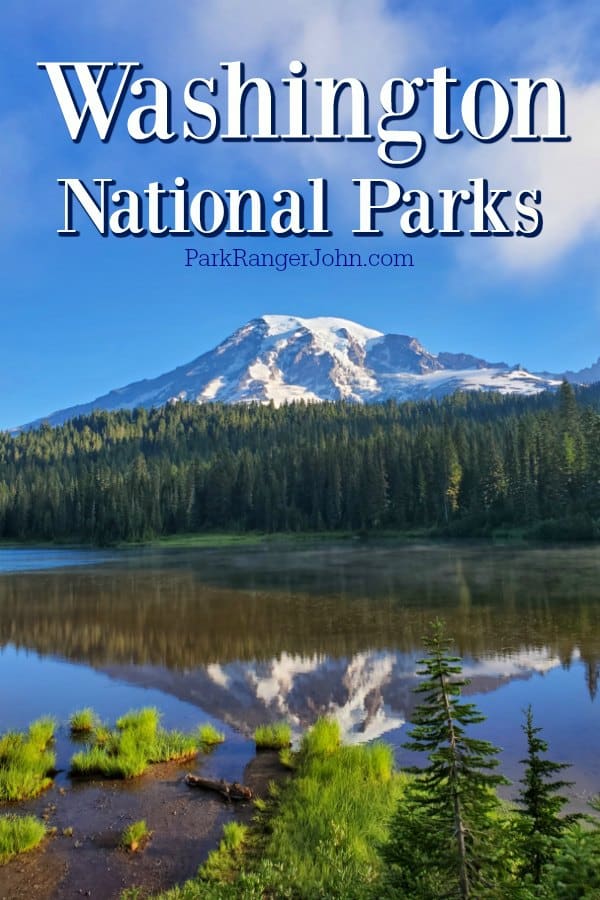
National Parks in Washington
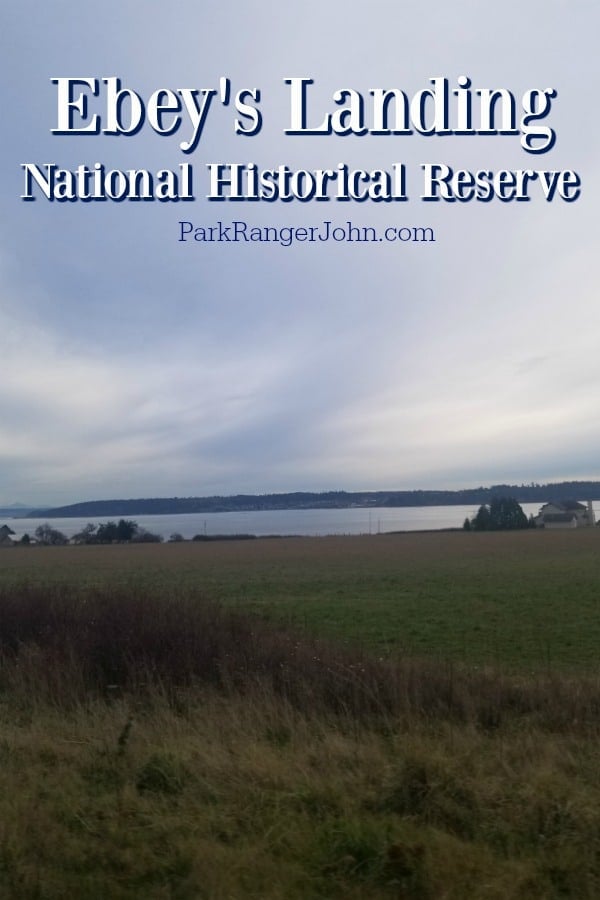
Ebey’s Landing National Historical Reserve
Top Things to do - Hiking in the Reserve, Visit three Washington State Parks, Mountain Bike on the Kettles Trails, Visit Historic Coupeville, and Visit the Island County Historical Museum. Go birdwatching at Crockett Lake, Jacob and Sarah Ebey House, The Historic Ferry House, Kayaking
Lodging - The Historic Captain Whidbey Inn on Penn Cove offers accommodation
Camping - You will find camping facilities at two of the state's most popular campgrounds, Fort Ebey State Park and Fort Casey State Park.
Park Address - The Administrative Office of the Trust Board - the Cottage at Sunnyside, 162 Cemetery Road, Coupeville, WA 98239
Ebey's Landing NHR is located in Northwestern Washington approximately 50 miles north of Seattle. The park protects over 17,500 acres of land and is open year-round.
The park was established in 1978 "to preserve and protect a rural community which provides an unbroken historic record from... 19th-century exploration and settlement in the Puget Sound to present time".
One interesting thing about this park is that very little of the park lands are actually federally owned. The land is still worked by farmers whose ancestors claimed the land under the 1850 land law.
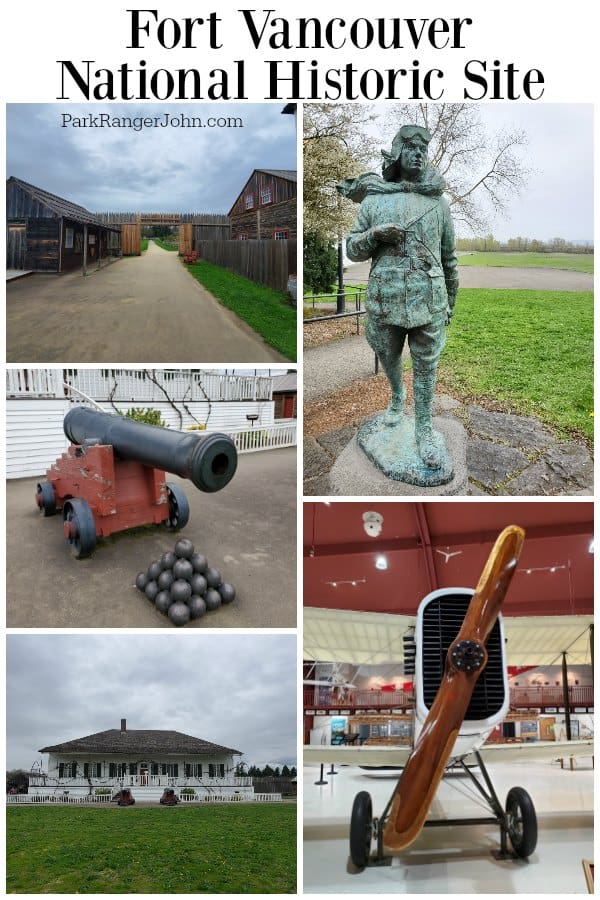
Fort Vancouver National Historic Site
Top Things to do - Visit the Fort Vancouver Visitor Center, Visit Pearson Air Museum, Watch a Blacksmith Work at Fort Vancouver, Experience the Fort Vancouver Kitchen, Hiking, Picnicking at Fort Vancouver National Historic Site, Visit the Fort Vancouver Village, Visit the Japanese Castaways' Memorial, Visit the Fort Vancouver Garden, Birdwatching, Visit Fort Vancouver, Biking, Watch the Sunrise and Sunset, Become a Junior Ranger
Lodging - There are no National Park Lodges within the park.
Camping - Camping is not available at the park
Park Address - 1501 E Evergreen Blvd, Vancouver, WA 98661
Fort Vancouver NHS is located in southwestern Washington just north of Portland, Oregon. The park is open year-round and offers visitors the opportunity to tour a recreated 19th-century trading post.
In 1825 the Hudson Bay Company built a headquarters and supply depot for its operations in the Pacific Northwest. This trade center had a significant influence on the cultural, political, and commercial developments in the Oregon Territory.
Fort Vancouver had the first hospital, library, school, sawmill, gristmill, and shipbuilding site. The fort also served as the terminus of the Oregon Trail for immigrants.
Visitors can explore the recreated fort, watch weapons demonstrations, and amazing living history programs.
Klondike Gold Rush National Historical Park – Seattle Unit
Top Things to do - See the free park film, "Gold Fever: Race to the Klondike."
Lodging - There are no lodging options within the park.
Camping - There are no camping facilities at the Seattle location
Klondike Gold Rush NHP has multiple locations including a location near downtown Seattle.
Seattle thrived during the gold rush and was a vital stopping point for settlers heading to Alaska. It is estimated that 30,000 to 40,000 of the 70,000 settlers heading to Alaska traveled through Seattle.
Seattle was advertised as the place to stop to get all of your supplies before heading north.
Visitors can learn more about this history and the gold rush at the visitor center.
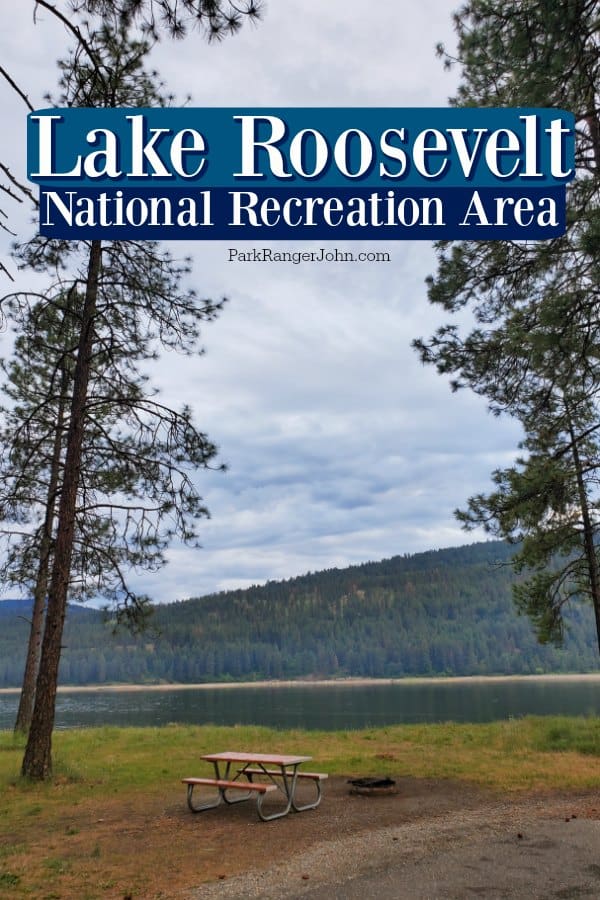
Lake Roosevelt National Recreation Area
Top Things to do - Boating, Fishing, Canoeing and Kayaking, Hiking, Self Guided Walks, Picnicking, Wildlife Viewing, Birdwatching
Lodging - There are no National Park lodges within the park
Camping - Lake Roosevelt National Recreation Area offers three types of camping:
Standard campgrounds: groups of 10 people or less (reservations required)
Group campgrounds: groups of more than 10 people (reservations required)
Boat-in campgrounds and shoreline camping: access via boat only (no reservations)
Park Address - Lake Roosevelt National Recreation Area, 1008 Crest Drive, Coulee Dam, WA 99116
Lake Roosevelt NRA is located in Northeastern Washington approximately 85 miles west of Spokane. The park is open year-round and offers boating, camping, fishing, swimming, and day-use areas.
Lake Roosevelt was created when the Grand Coulee Dam was created in 1941. The park includes many campgrounds, St. Paul's Mission, The Fort Spokane Visitor Centr, and 22 boat ramps around Lake Roosevelt.
Manhattan Project National Historical Park
Top Things to do - Start with the Visitor Center, Join a Ranger Program, Bike and Walk the Sacagawea Heritage TrailTour Behind the Fence, Attend a B Reactor Tour, Enjoy a Pre-War Historic Sites Tour, and the Sacajawea Historical State Park
Lodging -. You may find abundant lodging options in the Tri-Cities.
Camping - There are no campgrounds within the park
Park Address - Manhattan Project National Historical Park Visitor Center, 2000 Logston Blvd, Richland, WA 99354
The Manhattan Project NHP is located in Washington, New Mexico, and Tennessee. The park interprets and tells the history of the people, events, science, and engineering that led to the creation of the atomic bomb.
There is a park visitor center in Richland, Washington. Visitors can sign up online to take a tour of Hanford B-Reactor National Historic Landmark. The 4 hour tours are free but you do need to sign up ahead of time.
For more information, please visit the Manhattan Project NHP B-Reactor Tours page.
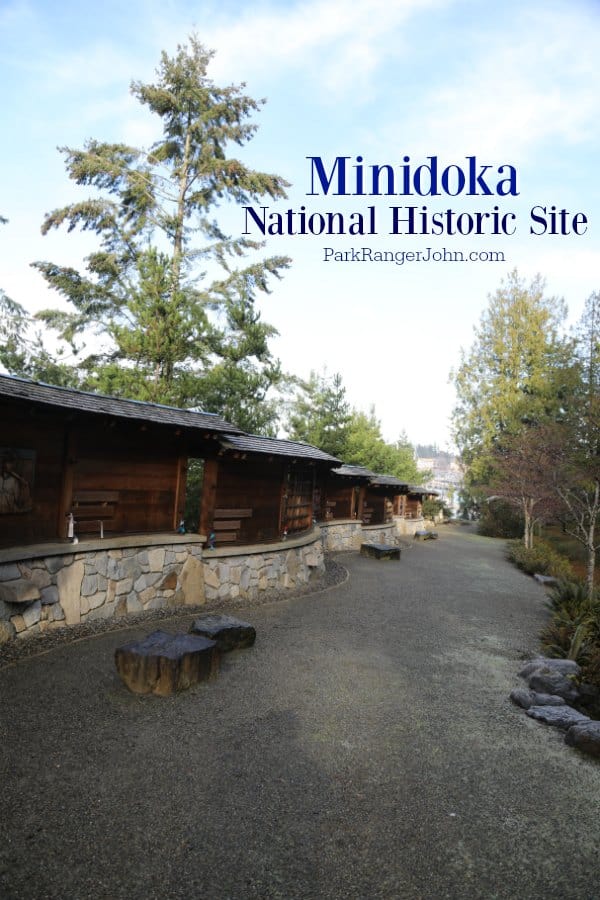
Minidoka National Historic Site
Top Things to do - Visit the Bainbridge Island Japanese American Exclusion Memorial, Guided Tours, Become a Junior Ranger
Lodging - There are no National Park lodges within Minidoka NHS.
Camping - There are no campgrounds within the site.
Park Address - Bainbridge Island Japanese American Exclusion Memorial: Located at Pritchard Park, 4192 Eagle Harbor Drive, Bainbridge Island, WA 98110
The Minidoka NHS is located in both Washington and Idaho. The Washington location is on Bainbridge Island.
When President Roosevelt signed Executive Order 9066 on December 7, 1941, it stated that the war department could create zones from which Japanese Americans could be excluded.
The first area that was designated was Bainbridge Island. Today there is a memorial dedicated to these events and the Japanese Americans who were ferried off the island before being sent to Manzanar and then on to Minidoka.
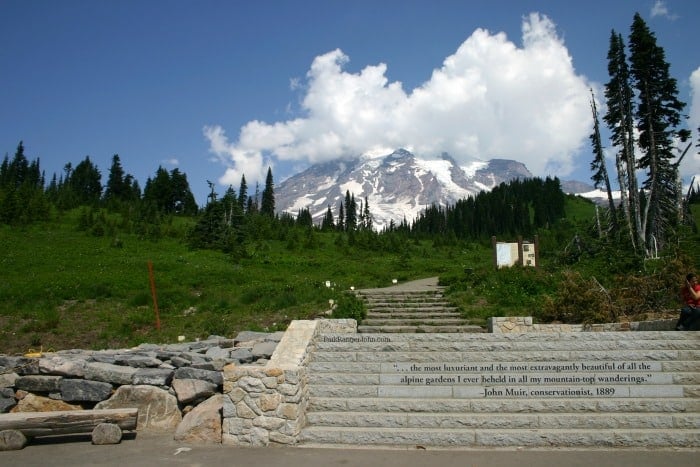
Mount Rainier National Park
Top Things to do - Road Trip Around the Mountain, Cloudy Day Activities at Mount Rainier, Junior Ranger Program, Try en Plein Air Painting, Fishing and Boating, Hiking, Biking, Discover Wildflowers, Winter Activities
Lodging - There are two National Park Lodges located within the park.
Camping - There are three campgrounds located within the park. They offer a total of 480 campsites during the summer.
Park Address - 39000 State Route 706 E, Ashford, WA 98304
This national park contains the active stratovolcano Mount Rainier, the tallest volcano in the continental United States and the highest point in the Cascade Range, as well as its immediate surroundings. Mount Rainier is the dominant landmark for the Seattle-Tacoma-Bellevue metropolitan area.
Park fees for single visits are charged by the car, or by the individual on smaller vehicles or other modes of transportation. Additional fees apply for climbing permits. Backcountry permits are free, but limited in number. During the summer, the Wonderland Trail is so popular that backcountry permits are only available by lottery before May.
The park is open all year, although some roads, campgrounds, and visitor facilities close in winter. There is always some permanent snow cover near the glaciers.
Hikers in Mount Rainier National Park should be aware that the volcano is much more active than previously thought. Although no eruption is imminent as of the time of writing, Mount Rainier has erupted previously, the most recent time most recently in 1854. Even today, its ongoing geothermal heat is sufficient to keep both its craters free of ice in the midst of surrounding glaciers.
At all times of the year, hikers on the Wonderland Trail and in other parts of Mount Rainier National Park should be prepared for precipitation and sudden changes of weather. The western slopes of Mount Rainier are much wetter than its eastern slopes. In particular, Paradise is notorious for its 126 annual inches of rain and 26 annual feet of snow. The driest time of year is usually high summer from July to September.
Mount Rainier National Park can be reached from the west by State Route 706, and from the east by State Routes 123 and 410. Between April and November, the park can also be reached from the northeast by State Route 165, although car access from this direction is limited. Although public transit does not run to the park itself, some of the trails leading into the park can be reached from Seattle by public transit.
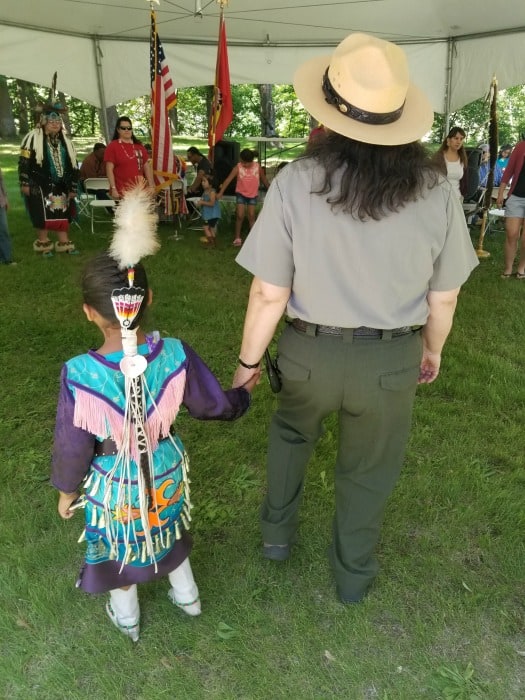
Nez Perce National Historical Park
Top Things to do - Visit Old Chief Joseph Gravesite, Burial Site of Chief Joseph the Younger (The cemetery is private property and a sacred place)
Lodging - There are no lodging options within the park,
Camping - There are no campgrounds within Nez Perce NHS.
Park Address - Nez Perce National Historical Park, 39063 US Hwy 95, Lapwai, ID 83540-9715
Nez Perce NHP is located in Idaho, Montana, Oregon, and Washington with the main visitor center near Lewiston, Idaho. The park has sites spread over 4 states but many can be seen on a day's drive.
The Niimiipuu people who have historically been called Nez Perce have lived in the Pacific Northwest for 100s of years. They like many tribes experienced non-Indian immigration into the region.
In 1877, fighting broke out between a faction of Nez Perce and white settler in the Wallowa Valley of Oregon. These battles would become known as the Nez Perce War.
Today visitors can visit 38 sites that are spread over what was the traditional Nez Perce people's homeland. There is an amazing visitor center is Lapwai, Idaho that has a wonderful movie and information about the park.
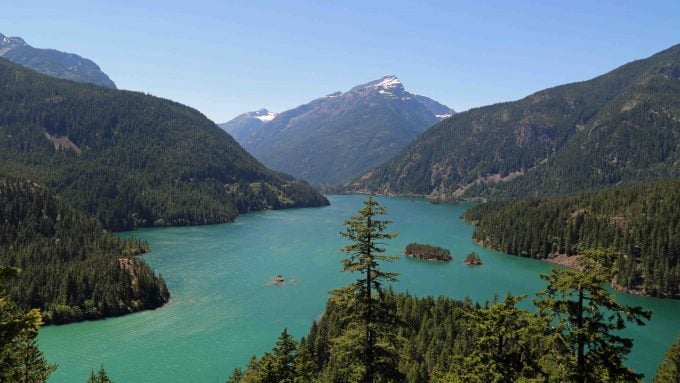
North Cascades National Park
Top Things to do - Hiking, Camping. Backpacking, Boating, Biking, Horseback Riding, Wildlife Viewing, Climbing, Fishing, Ranger Programs, Guided Tour
Lodging - Both Ross Lake Resort and the North Cascades Lodge at Stehekin provide excellent options for overnight stays in the park. Ross Lake Resort offers breathtaking views and the unique experience of staying in one of their 15 floating cabins, where the lake becomes your own private backyard. On the other hand, the North Cascades Lodge at Stehekin offers versatility with options to rent a room, a private cabin, or even an entire house, catering to individuals, couples, and larger groups alike.
Camping - There are six designated drive-in campgrounds available within the park, along with a few boat-in sites and wilderness sites.
Park Address - 810 State Route 20, Sedro-Woolley, WA 98284
This national park is the northernmost of Washington's national parks. It consists of three separate park units, unified within the Stephen Mather Wilderness. There are no entrance fees, but there is a charge to camp at some campgrounds.
The park is open all year, although some roads, campgrounds and visitor facilities close in winter. High elevation trails above 2,000 feet, including the Pacific Crest Trail, will usually have some snow cover between October and July.
At all times of the year, hikers should be prepared for precipitation and sudden changes of weather. The western slopes of the Cascades are usually much wetter than the eastern slopes. The driest time of year is normally high summer from July to September.
Between April and November, North Cascades National Park can be reached from State Route 20 (the North Cascades Highway). State Route 20 beyond Washington Pass is closed in winter, and other parts of State Route 20 may also be closed because of weather. The Ross Lake National Recreational Area is also accessible from the north by the Silver-Skagit gravel road, which descends from Hope, British Columbia.
The Lake Chelan National Recreational Area and Stehekin Valley cannot be reached by car. It is accessible by passenger ferry, or by airplane from Chelan.
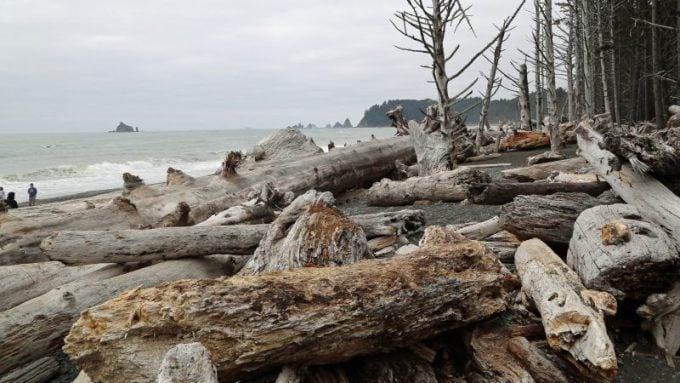
Olympic National Park
Top Things to do - Visit the Visitor Centers, Boating, Climbing, Fishing, Hiking, Ranger Led Programs, Tidepool Activities, Wildlife Viewing, Birdwatching
Lodging - The lodges and cabins located throughout Olympic National Park provide a range of accommodations. Visitors may choose from rooms in historic hotels dating back to the early 1900s, modern motel type accommodations, or rustic cabins. Reservations are strongly encouraged. Rooms book up fast, especially in July and August.
Camping - There are multiple campgrounds spread throughout the park!
Park Address - Olympic National Park Visitor Center, 3002 Mount Angeles Road, Port Angeles , WA 98362
This national park is the westernmost of Washington's national parks. The Hoh and the Quileute native peoples both have reserves within the park. Olympic National Park has been designated an International Biosphere Reserve and a World Heritage Site.
Park fees for single visits are charged by the car, or by the individual on smaller vehicles or other modes of transportation. Additional fees apply for camping or backcountry permits.
The park is open all year, although some roads, campgrounds, and visitor facilities close in winter. High-elevation trails above 2,000 feet will usually have some snow cover between October and July. Trail sections that run along the beach are often completely covered during high tide.
At all times of the year, hikers should be prepared for precipitation and sudden changes in weather. The western mountain slopes are much wetter than the eastern slopes. For example, the temperate rain forest along the western valleys of Mount Olympus receives about 12 feet of rain each year. Even more, precipitation falls higher up, much of it as snow. The driest time of year is high summer from July to September.
Olympic National Park can be reached by U.S. 101. Several ferries also operate into Port Angeles and Port Townsend.
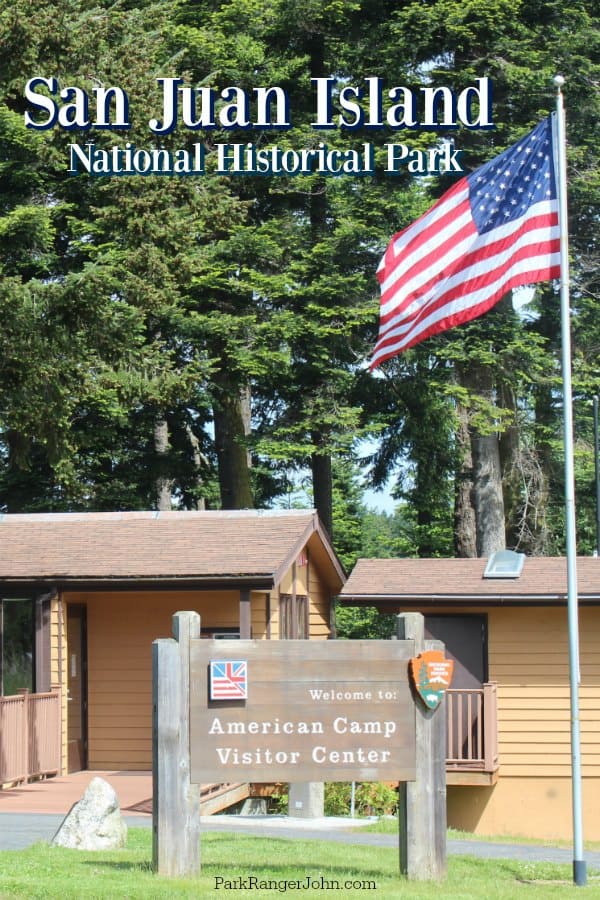
San Juan Island National Historical Park
Top Things to do - Wildlife Viewing, Take in Views, Foraging, Biking, Picnicking, Self Guided Tours, Kayaking, Walk the Historic Coastlines (Beaches)
Lodging - There are no lodging options within the park.
Camping - There are no campgrounds within the park.
Park Address - 4668 Cattle Point Rd., Friday Harbor, WA 98250
San Juan Island NHP is located in Northwestern Washington approximately 35 miles west of Bellingham on San Juan Island. In order to reach the park, you will need to take a ferry to Friday Harbor.
In 1859, American and British troops almost went to war over...a pig. Yes, there was almost a pig war.
An American Farmer shot a pig who had been eating his potatoes. The farmer refused to pay the money demanded by the Hudson Bay Company. The matter soon escalated and Britain dispatched warships and the Americans sent soldiers.
Lt. General Winfield Scott who was the commander of the U.S. Army came out to help mediate the situation. It took 12 years to reach an agreement over the island. During this time both the American and British maintained small military posts on the island.
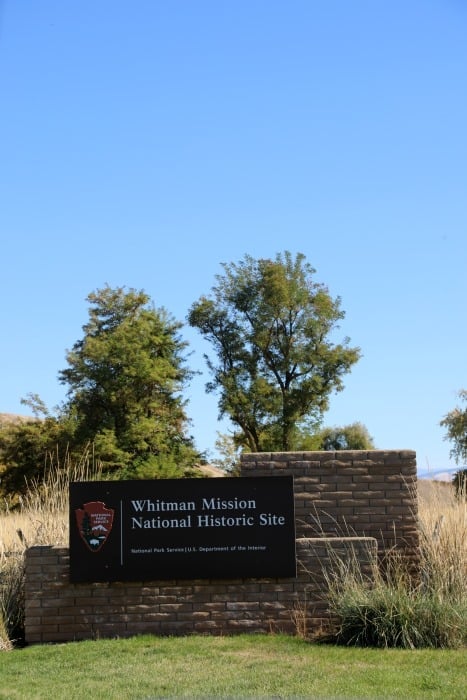
Whitman Mission National Historic Site
Top Things to do - Start your visit by watching the Whitman Mission park film, Have fun with Ranger Programs, Explore the Visitor Center Museum, Walk the Trails, Enjoy a Picnic, and Take the Whitman Mission NHS Audio Tour
Lodging - There are no National Park Lodges within the park.
There is lodging available in Walla Walla, Washington including quite a few vacation rentals and hotels.
Camping - There are no National Park Campgrounds within the park.
Park Address - 328 Whitman Mission Road, Walla Walla, WA 99362
Whitman Mission NHS is located in Southeastern Washington approximately 45 miles east of Kennewick near Walla Walla. The park is open year-round and offers tours of the museum and historic grounds.
Marcus and Narcissa Whitman were among a small group of missionaries who traveled to Oregon country in 1836. They came west to convert Native American tribes to Christianity.
Multiple events led to the death of the Whitman's on November 29, 1847, when the Cayuse attacked the mission. Prior to this over half of the local Cayuse were killed during a measles outbreak.
The park provides an interpretation of the events that occurred at the mission along with walking trails that leads you through the historic mission grounds.
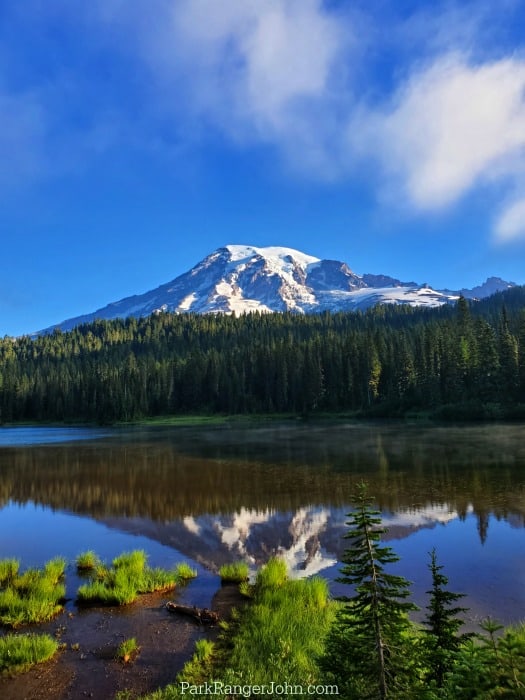
List of National Parks in Washington
- Ebey’s Landing National Historical Reserve
- Fort Vancouver National Historic Site (Washington, Oregon)
- Klondike Gold Rush National Historical Park – Seattle Unit
- Lake Roosevelt National Recreation Area
- Manhattan Project National Historical Park (WA, NM, TN)
- Minidoka National Site (WA, ID)
- Mount Rainier National Park
- Nez Perce National Historical Park (ID, MT, OR, WA)
- North Cascades National Park
- Olympic National Park
- San Juan Island National Historical Park
- Whitman Mission National Historic Site
Affiliated Sites
- Ice Age Floods National Geologic Trail (WA, OR, ID, MT)
- Lewis and Clark National Historic Trail (ID, IL, IA, KS, MO, MT, NE, ND, OR, SD, WA)
- Oregon National Historic Trail (ID, KS, MO, NE, Or, WA, WY)
- Wing Lake Museum Affiliated Area
There are 15 National Parks in Washington that receive over 8.5 million visitors each year. These visitors produce over $526 million in economic benefits.
The National Parks in Washington include 1 National Trail and 1,541 National Register of Historic Places listings. There are 24 National Historic Landmarks and 18 National Natural Landmarks in Washington National Parks.
Washington has 1 UNESCO World Heritage Site (See this list for all of the UNESCO World Heritage Sites in the United States), 827 places recorded by the Heritage Documentation Program and over 5.9 million objects in the Washington National Park museum collections. There is also 1,128 archeological sites.
For an entire list of US National Parks head over to our list of US National Parks in Alphabetical Order. We also have a printable checklist of all 417 National Park properties in the United States available.
If you have dreamed of working in the National Parks make sure and check out our article on How to Become a Park Ranger. Working in the parks is one of the most amazing jobs you can find. There is just something special about waking up and knowing you are going to work in a beautiful park.
Check out the National Parks in neighboring states
